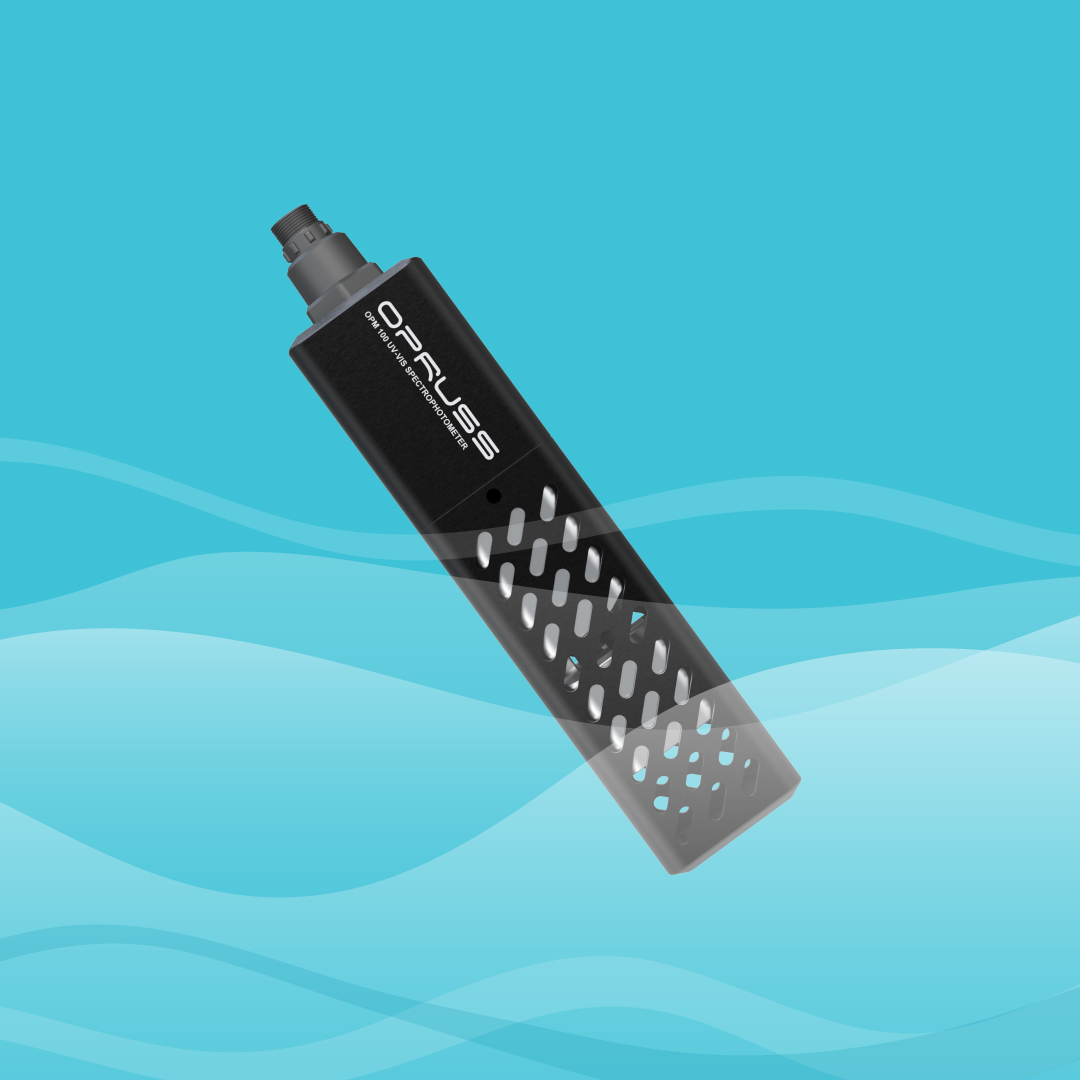OPM Turbidity
Water Solution

OPM Turbidity
Water Solution

- Solutions
- Water
- OPM Turbidity

Widely used in water and sewage treatment plants, hydroponics, and aquaculture systems, turbidity measurements help monitor the level of suspended particles visible in light. Water turbidity values are important for measuring the amount of solids and color in water. Accurate measurements are crucial for checking water quality in industrial processes, treatment plants, and aquaculture. If turbidity levels change from what is expected, it can indicate changes in water quality.
OPM TURB uses advanced fiber optic technology to measure turbidity accurately. Light from the emitter enters the water sample and scatters off particles in a specific wavelength range of 720 nm to 860 nm. The scattered light, which moves at a 90-degree angle, enters the detector. This method follows the nephelometric approach, and turbidity values are expressed in nephelometric turbidity units (NTUs) according to the ISO 7027 standard.
Measurement Method : | ISO7027 Scattered light at 90 degrees, |
Range : | 0.3~100NTU, 0.3~1000NTU, 1.0~4000NTU |
Resolution : | 0.01NTU, 0.1NTU, 1.0NTU |
Accuracy : | +/-3% FS |
Resolution : | 0.01 mg/l |
OperatingTemperature : | 0 ~ 55°c |
Min. Detection limit : | 0.3NTU |
Depth : | IP68, 10m Max |
Power : | DC 5~12V 10mA (normal) |
Interface Support : | Output compatible with OPRUSS Controller systems |
Materials : | POM, PMMA, SS316 |
Dimensions : | Length 170.5mm, diameter 22mm |
Response time : | Minimum 30s T90 |
- Accurate and high-resolution real-time measurements
- Easy integration – just plug it in to use
- Integrated digital display for real-time monitoring and data logging for advanced analysis
- Builtin ACSC Cleaning Very low maintenance operation
- Built-in sensor diagnostics for easy access to sensor performance details through two-way communication
- Reliable and sturdy operation under changing conditions
- User-friendly calibration
These sensors can detect low levels of turbidity, which is important for monitoring clean water bodies and industrial processes. They are designed to work in tough conditions with little maintenance. Many have self-cleaning features to avoid clogging and to maintain accuracy.
- Sewage Treatment Plant
- Effluent Treatment Plant
- Aquaculture
- Water Treatment Plant
- Freshwater Monitoring
- Lake and River Monitoring
Other Products
Solutions
Popular models high attention products from various segment
ONMS Noise Monitoring System Class -I
Real- time noise
monitoring with instant
data communication.










